Utilizing rainwater for an off-grid water supply is a practice in sustainable living and resource responsibility. It involves constructing a collection system, usually with gutters and downspouts that guide rainwater into storage, ensuring the collected water is safe for use through filtration and purification, and then using this resource for various household needs. This process can be started on a small scale, supplementing your current water supply, and gradually expanded towards total self-sufficiency.
- Rainwater is a renewable resource that can be harnessed anywhere there are clouds overhead.
- Constructing a rainwater collection system tailored to your needs and rainfall amounts is the first step.
- Filtration and purification are necessary to ensure the harvested rainwater is safe for use.
- The harvested and treated rainwater can be used for a variety of purposes, from gardening to household chores.
- Transitioning to off-grid water can start small and gradually move towards total self-sufficiency.
How to Harness Rainwater for Off-Grid Water Supply

Understanding Rainwater & Its Potential
Water is a fundamental necessity of life and a key component of a self-sufficient, off-grid lifestyle. The beauty of rainwater is in its availability and renewability. It’s a generous gift from the sky, free and accessible wherever there are clouds overhead. From rural homesteads to urban rooftops, rainwater is a resource waiting to be harnessed.
Rainwater harvesting is a millennia-old practice with a modern twist. It’s not just about survival anymore, it’s about sustainable living. It’s about taking responsibility for your resource consumption and reducing your impact on the world. It’s about living a life in harmony with nature, rather than at odds with it. So, how do we tap into this incredible resource? Let’s dive into the practical steps of harnessing rainwater for your off-grid water supply.
Building Your Rainwater Collection System
The first step in harnessing rainwater for your off-grid water supply is to construct a collection system. This typically involves the use of gutters and downspouts on your home or other structures to guide the rainwater into a storage tank. The size and complexity of your system will depend on your needs and the amount of rainfall you receive. As one DIY expert shared, “the key is to start small and scale up as your comfort level and needs increase.”
Storage tanks come in a variety of sizes and materials. Some people use repurposed IBC totes or even old whiskey barrels, while others invest in large, professionally manufactured polyethylene tanks. The right choice for you will depend on your budget, your space, and your long-term goals.
Once your collection system is in place, you’re ready to start gathering rainwater. But before you can use it, you need to ensure it’s safe. That’s where filtration and purification come in.
Purifying & Using Your Rainwater
Rainwater is naturally soft and free of many common contaminants found in ground water, but it can still pick up particles and bacteria as it falls from the sky and flows off your roof. A simple first-flush diverter can prevent the first rush of water, which may contain roof debris, from entering your tank.
For drinking and cooking, more thorough purification methods are needed. These can range from off-the-shelf filters and UV light sterilizers to homemade bio-sand filters and solar disinfection. The appropriate method depends on the quality of your collected rainwater and your level of comfort with various treatment options.
Once you’ve treated your rainwater, it’s ready to use. From hydrating your garden to washing your dishes and clothes, rainwater can meet a surprising amount of your water needs. And with the right system, you can even supply your entire home with pressurized, potable water.
Transitioning to off-grid water doesn’t have to be all or nothing. You can start by supplementing your current water supply with rainwater and gradually move towards total self-sufficiency. Remember, every drop counts, and every step you take brings you closer to a more sustainable and resilient lifestyle.
Sustainable Water Filtration Systems for Off-Grid Homes
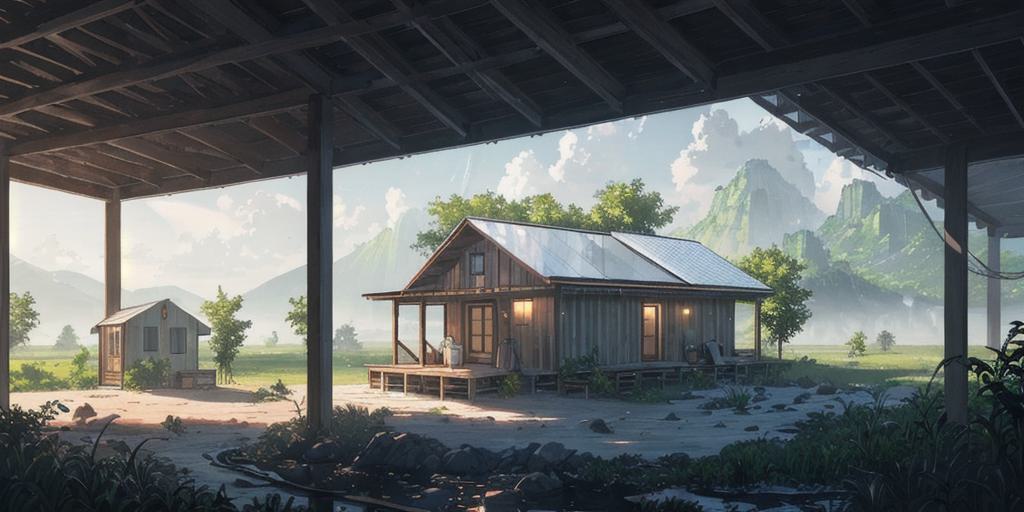
Embrace the Power of Sustainable Filtration
Moving off-grid doesn’t mean we abandon the luxuries of modern living. It simply means that we innovate and adapt to sustain these luxuries in harmony with nature. Take water filtration for instance – it’s not just about quenching your thirst, it’s about ensuring that every drop of water you consume is as pure as nature intended it to be.
As homeowners like Geoff Perkins of Collins Residential have observed, integrating sustainable elements into your living space isn’t just good for the planet, it’s good for your wallet too. Yes, the initial investment can be significant, but the long-term savings on energy bills can offset this.
Once you’ve collected your rainwater, the next step is purifying it. This process can be as straightforward or as complex as you need it to be. From simple sediment filters to more elaborate UV sterilizers, the choice is yours. Remember, the goal is not just to filter out the impurities, but to do it in a way that preserves nature’s balance.
Go with the Flow: The Gravity of the Situation
One of the simplest and most effective methods of water filtration is gravity-fed filtration. This system works on a basic principle: water is poured into the top of the filter and gravity pulls it down through the filtration media, removing bacteria and other contaminants along the way.
What’s beautiful about this system is its simplicity. There are no electrical components to fail, no plumbing connections to leak, and no moving parts to break. And because it’s powered by gravity, it can purify water anywhere, anytime – making it a perfect fit for off-grid living.
UV Purification: Harnessing the Power of Light
Another efficient and sustainable method of water purification is ultraviolet (UV) light. This technology uses UV-C light to destroy bacteria, viruses, and other harmful microorganisms, providing you with safe, clean drinking water.
Like gravity-fed filtration, UV purification is relatively straightforward. The water simply flows through a chamber where it’s exposed to the UV light. The beauty of UV purification is that it doesn’t add anything to the water – no chemicals, no tastes, no odors. It simply eliminates the harmful elements, leaving you with pure, clean water.
Companies like Dvele are pioneering in creating off-grid, prefabricated homes that feature these sustainable water systems and more. Their homes are a testament to the fact that going off-grid doesn’t mean compromising on the conveniences of modern living.
Moving towards a sustainable lifestyle isn’t a race, it’s a journey. Every step you take brings you closer to living in harmony with nature. Whether it’s rainwater harvesting or water filtration, every initiative counts. Remember, the goal is not just to survive, but to thrive – and to do it in a way that respects and preserves our planet for generations to come.
Off-Grid Water Storage Solutions for Rural Areas
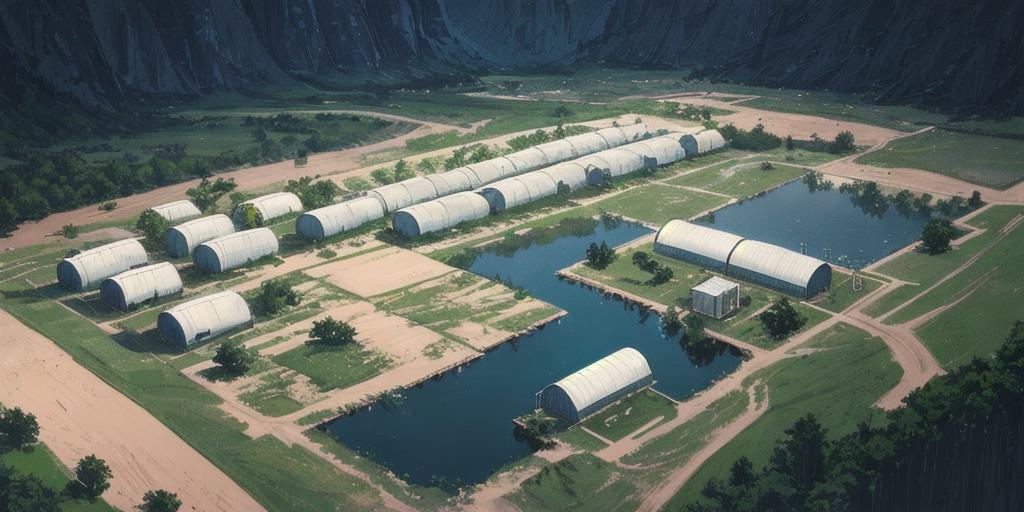
Reinventing the Water Wheel: The Power of Off-Grid Water Storage
Just as electricity has the power to transform lives in rural areas, so too does water – the essence of life. As we strive for a slower, healthier lifestyle, it’s crucial to remember that access to clean, reliable water sources is often the starting point for a sustainable off-grid existence. This journey towards self-sufficiency doesn’t mean we have to reinvent the wheel, but perhaps we should consider reinventing the water wheel.
Let’s take a leaf out of the book of our ancestors, who harnessed the power of moving water to grind grain or power machinery. Now, we can create off-grid water storage solutions that are modern, efficient, and above all, sustainable. Zambia’s endeavor to bring electricity to rural areas is a testament to the transformative power of such off-grid solutions, and it’s not so different when it comes to water.
Barrel of Solutions: Rainwater Harvesting and Storage
One of the most effective and eco-friendly ways to secure a reliable water source is rainwater harvesting. Not only is this method cost-effective, but it also reduces our dependence on external water supplies. It’s as simple as installing a catchment system on your roof, which redirects rainwater into a storage barrel. This way, every rainfall becomes an opportunity to replenish your water supply.
But don’t be fooled by the simplicity of this method. It’s not just about collecting water; it’s about the magic that happens inside the barrel. As the water sits, natural sedimentation occurs, which is an essential part of the purification process. A well-designed rainwater harvesting system can provide a significant portion of your water needs, and when combined with other off-grid water solutions, it becomes a cornerstone of sustainable living.
The Reservoir Revolution: Earth Dams and Ponds
Another powerful off-grid water storage solution is creating your own reservoirs. This method involves constructing earth dams or digging ponds to capture and store large volumes of water. Not only does this provide a substantial water source, but it also creates a micro-ecosystem that can attract wildlife and even support small-scale agriculture. It’s an excellent example of how an off-grid lifestyle can coexist and even enhance the natural environment.
Just like Ethiopia’s endeavor to bring solar-biogas hybrid power to rural communities, creating your own reservoirs is an investment in the future. It’s a tangible commitment to the off-grid journey and a testament to the power of self-sufficiency.
As we explore these off-grid water storage solutions, it’s clear that the journey towards a sustainable lifestyle is not a departure from modern conveniences, but rather a reimagining of them. It’s about realizing that living in harmony with nature isn’t just possible, it’s the way forward. From the simplicity of rain barrels to the transformative potential of reservoirs, each step brings us closer to a future where we don’t just survive off-grid – we thrive.
The Benefits of Off-Grid Water Systems for Homesteading
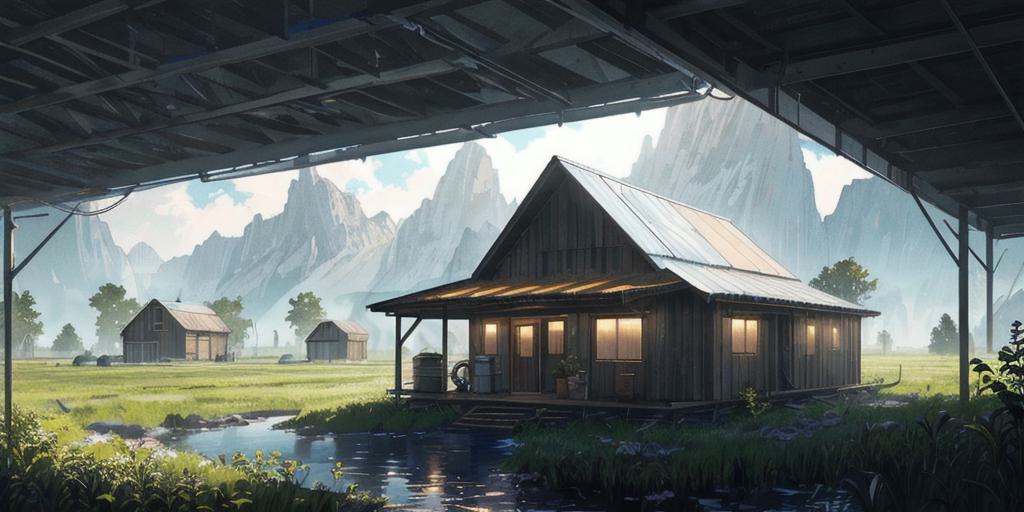
Off-grid Water Systems: A Catalyst for Personal Growth
Imagine a life where you are no longer a hostage to monthly utility bills, where you take control of your resources, and where every drop of water in your home is a testament to your self-sufficiency. Welcome to the world of off-grid water systems. It’s a world that encourages you to embrace the challenges, to grow, and to discover your true potential.
An off-grid water system is not just about survival; it’s about thriving. It’s about harnessing the power of nature to fulfill your needs. More than just a means to an end, the creation and management of these systems become a profound journey of self-discovery and personal growth. Like the homesteader who conserves water, you start to see the larger picture and become acutely aware of your impact on the environment.
Smaller Carbon Footprint, Bigger Impact
Off-grid water systems not only free you from dependency on public utilities, they also contribute to a healthier planet. Whether it’s implementing a rainwater harvesting system or developing a greywater system, each step you take towards self-sufficiency also significantly reduces your carbon footprint.
As you grow your own food and minimize the need for commercially-produced goods, the benefits ripple outwards. The impact is felt far beyond the boundaries of your property. You’re not just sustaining your life; you’re contributing to the health of the planet, preserving biodiversity, and ensuring a sustainable future for the generations to come.
Generating Income and Reducing Costs
There’s a certain beauty in the simplicity of an off-grid lifestyle, but don’t be fooled. This lifestyle doesn’t necessarily equate to financial hardship. In fact, it can open up new avenues for income generation and cost reduction. For instance, excess produce or rainwater can be sold, reducing overall expenses and even generating additional income.
Whether you’re offering workshops, selling homemade crafts, or even offering access to your water resources to your community, the potential is as vast as your creativity. As you journey towards self-sufficiency, you discover that an off-grid lifestyle doesn’t mean sacrificing modern conveniences. Rather, it’s about reimagining and reinventing them in harmony with nature.
These are just some of the profound benefits of off-grid water systems. As we delve deeper, we’ll explore some practical strategies to implement these systems, the transformative power of self-reliance, and how you can take the first step on this rewarding journey.
Designing an Off-Grid Water System for a Tiny House

Designing a Water System for Freedom and Self-Reliance
Transitioning to an off-grid lifestyle is like stepping into a dance with nature. Every drop of rain becomes a precious resource, every gust of wind a potential source of power. When it comes to designing an off-grid water system for a tiny house, the challenge is not just about making it functional. It’s about designing a system that sustains your life while enhancing your connection with the natural world.
Let’s dive into the essentials of designing a water system that supports your off-grid aspirations while also contributing to a healthier planet, and even possibly opening up new avenues for income generation.
Mastering the Art of Rainwater Harvesting
Rainwater catchment is an art form in the off-grid lifestyle. As beautifully demonstrated by Tiny House Sustainable Living Australia, even 1mm of rainfall can result in a significant amount of water, depending on the roof area of your tiny house. Every square metre of roof area can yield about a litre of water for each millimetre of rain, making rainwater harvesting an essential part of an off-grid water system.
Of course, no system is perfect. A certain amount of wastage must be factored into the design – about 15% is a reasonable estimate. Even with this wastage factor, though, the potential for rainwater collection can be staggering. And remember, this is water that is entirely off-grid, entirely free, and entirely yours to use as you please.
However, it’s essential to ensure your rainwater collection system is designed efficiently. Consider consulting with a plumber experienced in off-grid water catchment systems or conducting thorough research yourself. A well-designed system can help you maximise your catchment potential, ensuring you get the most out of every precious drop of rain.
Nurturing a Sustainable Ecosystem with Greywater Systems
While rainwater provides a natural source of water, greywater systems offer a means of recycling water. Greywater – water that’s been used for washing dishes, showering, or laundry – can be re-purposed for watering plants or flushing toilets. Implementing a greywater system can significantly reduce your water usage, thereby lightening your environmental footprint.
A well-designed greywater system not only contributes to a healthier planet but can also save you money. According to the experience of a chef couple in Sweden, even a tiny house can benefit tremendously from a well-designed greywater system.
Using Solar Power for Water Heating and Pumping
As part of your off-grid water system, consider using solar power for water heating and pumping. Solar power can offer a reliable, renewable source of energy for these needs. A tiny house offers a unique opportunity to fully utilise solar power, as its small size often means fewer energy demands.
Consider the experience of Tom from AltE, who is designing a tiny house with a dedicated space for solar control and storage. By incorporating solar power into the design of his house from the beginning, Tom is ensuring his off-grid water system will be sustainable and robust.
Designing an off-grid water system for a tiny house is a journey of discovery, creativity, and empowerment. It embodies the essence of the off-grid lifestyle – a dance with nature that fosters self-reliance, freedom, and respect for the earth. And, with the right design, it’s a dance anyone can learn.
The Role of Solar Power in Off-Grid Water Systems
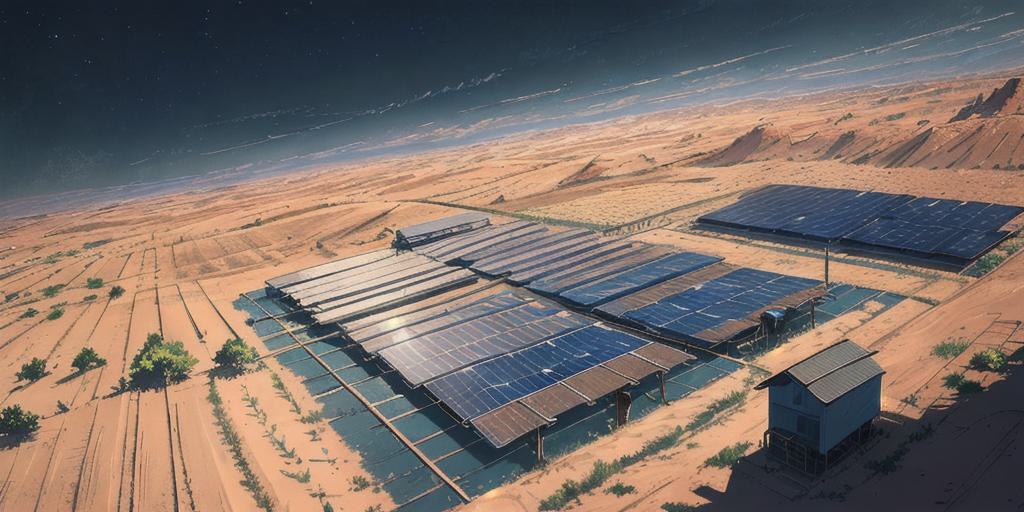
The Solar Power Revolution in Off-Grid Water Systems
Every off-grid journey is unique, just like the pioneers who embark on it. When it comes to harnessing solar power for your off-grid water system, it’s a dance of technology and nature, a perfect blend of science and art. By integrating solar energy into your water system, you are not only stepping closer to self-sufficiency but also contributing to the global shift towards renewable energy.
As seen in Hawaii’s solar-rich distribution grid, incorporating solar power in water systems isn’t just a choice, it’s a necessity. The sun, an abundant, clean, and sustainable energy source, can be harnessed to power your water pumps and heaters, reducing your reliance on non-renewable energy sources and cutting down your carbon footprint.
Shining the Light on Solar Powered Water Pumps
Imagine the sun rising, and with it, your water pump comes to life, humming along with the rhythm of the day. This is the reality of solar-powered water pumps. They are efficient, reliable, and perfect for remote areas where electricity is unreliable or non-existent. Solar powered water pumps use the sun’s energy to pump water from the ground or a nearby water source, storing it in a tank for later use. They are a perfect fit for rainwater harvesting systems, allowing you to pump and store rainwater during sunny days.
One might question the efficiency and reliability of such a system. But as proven by healthcare facilities in sub-Saharan Africa, solar power is not just a viable alternative to traditional power sources, but often a superior one. Solar power systems can offer a lifeline in areas where power outages are a common occurrence, ensuring a constant water supply when it’s needed the most.
Hot Water, Courtesy of the Sun
Now, let’s talk about solar water heaters. These systems convert sunlight into heat, warming up your water and storing it for use throughout the day. The beauty of solar water heaters lies in their simplicity and efficiency. They can provide a consistent supply of hot water, even on cloudy days or during winter months, all while significantly reducing your energy bills.
Take a moment to think about it. An off-grid water system powered by the sun, providing you with a sustainable supply of fresh, clean water. It’s not just about living off the grid; it’s about thriving off it. It’s about embracing a lifestyle that values self-reliance, sustainability, and harmony with nature.
As we continue this exploration of off-grid water systems, remember that every step towards self-reliance is a step towards a more sustainable and fulfilling life. It’s not just about surviving off the grid; it’s about thriving off it. Embrace the journey, the challenges, the triumphs, and the quiet moments of satisfaction when you sip that glass of water, heated by the sun and pumped by solar power, knowing you’ve danced with nature and won.
How to Build an Off-Grid Well for Rural Areas
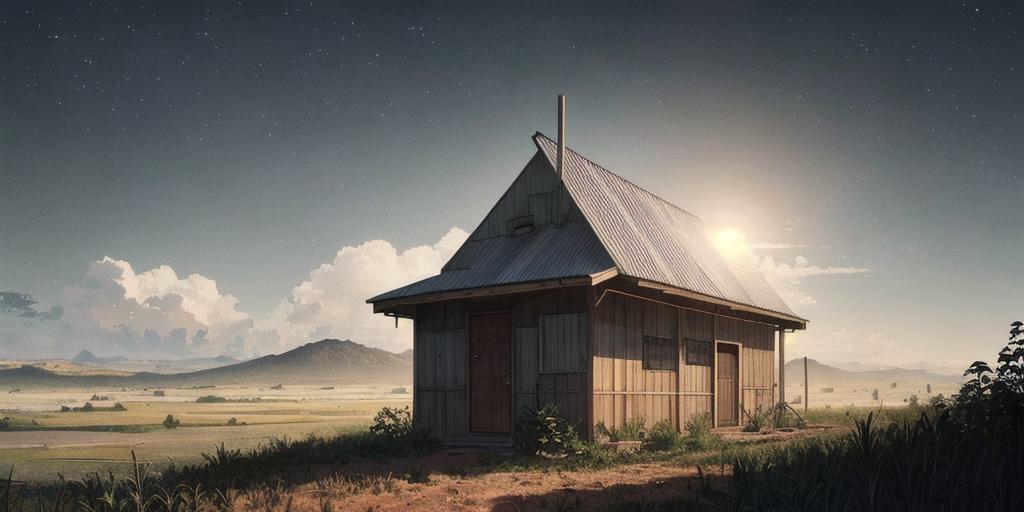
Decoding the Off-Grid Well Blueprint
Imagine the sweet taste of water, drawn straight from the earth beneath your feet, a resource as fresh as it is free. It’s not just about quenching your thirst; it’s about tapping into the heart of self-sufficiency, unlocking the primal wisdom that enables you to live in harmony with the earth. Building an off-grid well, particularly in rural areas, is a journey of discovery, a dance with nature, and a step towards untamed independence.
Before you start digging, you need to understand the rules of the game. Water, like everything else in nature, obeys certain laws. It flows along the path of least resistance, it seeps into the ground, and it fills up the empty spaces in the soil, creating what we call groundwater. Your well is simply a way to access this groundwater, a gateway to your own private water source. As seen in Sub-Saharan Africa, where access to clean water is a critical issue, the ability to access and purify groundwater can be a game changer.
Playing with the Earth: Dowsing and Digging
Every well begins with the quest for the perfect spot. This is where the ancient practice of dowsing comes into play. Armed with nothing more than a pair of L-shaped wire rods, the dowser walks slowly over the land, feeling for that subtle pull, that gentle tugging that signals the presence of water. It’s a blend of intuition and physics, a dance between the dowser and the earth.
Once you’ve found your spot, it’s time to start digging. This is where the real work begins. You’re not just creating a hole in the ground; you’re crafting a lifeline, a channel that connects the surface world with the hidden reservoirs of water deep beneath the earth. Using a combination of hand tools and machinery, you’ll dig down until you hit water, creating a well shaft that’s both wide enough to accommodate a pump and deep enough to ensure a steady water supply.
From Earth to Tap: The Journey of Off-Grid Water
With your well dug and your water discovered, it’s time to set up your pump system. Solar-powered pumps are an ideal choice for off-grid living. They harness the abundant energy of the sun to draw water up from your well, delivering it to a storage tank for later use. By integrating solar energy into your water system, you’re stepping closer to self-sufficiency and contributing to the global shift towards renewable energy.
Finally, your off-grid well journey culminates with the installation of a simple purification system. Using basic filters and UV light, you can remove impurities and kill bacteria, ensuring your water is safe and clean.
Building an off-grid well is more than just a project; it’s a declaration of independence. It’s about rejecting the constraints of the connected world and embracing the freedom of self-sufficiency. It’s about learning to dance with nature and finding your own rhythm in the heartbeat of the earth. It’s about stepping off the beaten path and carving your own trail. It’s about living a life that’s not just about surviving, but thriving.
The Importance of Water Conservation in Off-Grid Communities

The Elixir of Life: Water Conservation
We often take for granted the water that flows from our taps. But in an off-grid community, water becomes the elixir of life, an essential player in the orchestra of self-sufficiency. As the ancient Greek philosopher Thales aptly noted, “Water is the principle, or the element, of things.” In off-grid living, every drop counts. As seen in the case of Walls 2.0, a brilliant ecological design that combines rainwater harvesting with energy-efficient building technique, the importance of water conservation becomes palpable.
Integrating Conservation into the Off-Grid Lifestyle
Conserving water is not just about cutting back usage – it goes beyond that. It’s about integrating conservation into your lifestyle, seeing it as an inseparable part of your existence. It’s about realizing that each drop of water saved is a stride towards sustainability, a commitment to Mother Earth, and an assertion of your independence. It’s about creating an environment where you can thrive, not just survive.
In an off-grid community, this conservationist mindset becomes the norm rather than the exception. You start seeing water not as an unlimited resource, but as a precious commodity that needs to be cherished and conserved. You start looking at rainfall not just as a weather phenomenon, but as a valuable source of water. You start appreciating the role of water in your self-sufficient lifestyle, from growing your own food to maintaining your hygiene. This shift in perception, this embrace of conservation, becomes a defining characteristic of your off-grid journey.
The Power of Rainwater Harvesting
Rainwater harvesting isn’t a novel concept. It’s an ancient practice, a time-tested technique that has been employed by civilizations across the globe. What makes it so relevant in off-grid living is its simplicity. All you need is a catchment area (like your roof), a conveyance system (like gutters), and a storage tank. The rest is taken care of by Mother Nature herself.
But the true power of rainwater harvesting lies in its impact. As WWF Canada illustrates, rainwater harvesting is akin to making deposits in a bank – you’re storing water for future use, ensuring you have a steady supply even during dry periods. It’s about creating a buffer, a safety net that keeps you afloat when water becomes scarce. It’s about harnessing the power of nature to secure your water needs, thereby reducing your reliance on external sources.
In conclusion, water conservation in off-grid communities is not just a necessity; it’s a way of life. It’s about embracing the conservationist mindset, integrating it into your lifestyle, and harnessing the power of rainwater harvesting. It’s about seeing water as the elixir of life, a precious commodity that needs to be cherished and conserved. And most importantly, it’s about taking responsibility for your water needs, becoming the master of your own destiny, and stepping closer to the dream of self-sufficiency.
The Future of Off-Grid Water Technology
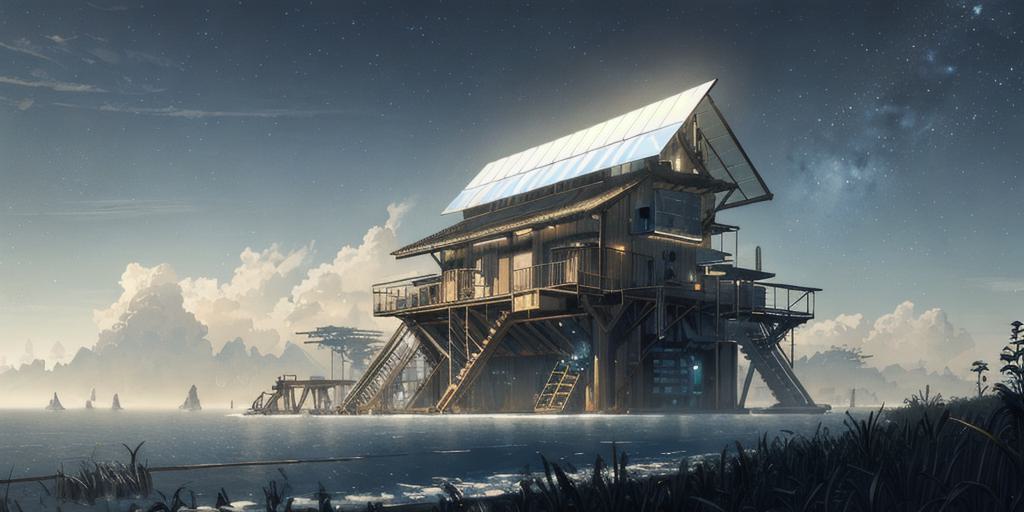
Stepping Stones to the Future: Off-Grid Water Systems
The future of off-grid water technology is a rapidly evolving landscape, with the emergence of new technologies and systems that challenge our traditional concepts of how we source, store, and manage our water supplies. We’re in the midst of a paradigm shift, transitioning from reliance on traditional mains water sources to more sustainable and autonomous off-grid systems.
Take the example of Japan’s Mirai Nihon project, an ambitious initiative that reimagines the off-grid future of Japan. A house known as MIRAI NIHON, or Future Japan, integrates advanced, yet-to-be-commercialized technologies, including an advanced water purification system capable of transforming polluted and unsanitary water, and even seawater, into potable water. Such innovations are not just revolutionary; they’re a testament to the potential of off-grid water systems.
Hydrogen Fuel Cells: The New Frontier
Another fascinating development in off-grid technology is the rise of hydrogen fuel cells. Once a distant dream, hydrogen fuel cells are now considered a viable option for off-grid power generation. Companies like Adelan are pioneering microtubular solid oxide fuel cell (mSOFC) technology, which harnesses hydrogen-rich fuels to produce nearly silent, emission-free electricity.
While the hydrogen economy is still developing, this technology serves as a stepping stone, bypassing many of the key obstacles facing hydrogen use. And as we know, energy and water are inextricably linked. The rise of such clean, sustainable energy solutions could significantly impact the future of off-grid water systems.
Embracing Decentralization: Off-Grid as the New Normal
As we look to the future, the most significant shift might not be technological but psychological. The concept of living off-grid, once considered a fringe lifestyle choice, is gradually entering mainstream consciousness. More and more, people are recognizing the appeal and practicality of a self-sufficient lifestyle, independent of traditional infrastructure.
Off-grid living does not mean abandoning modern comforts. Instead, it’s about finding innovative ways to maintain these comforts while reducing our ecological footprint and dependence on external systems. In the realm of off-grid water technology, this means developing and adopting systems that can efficiently harvest, store, and purify water, like the Mirai Nihon project. It also means harnessing new energy sources, like hydrogen fuel cells, to power these systems.
Ultimately, the future of off-grid water technology looks bright. It’s a future of innovative solutions, sustainable practices, and greater autonomy. As we continue to navigate this exciting frontier, we’ll not only reshape our relationship with water but also take significant strides towards a more sustainable and self-sufficient lifestyle.
Off-Grid Water Systems for Disaster Relief
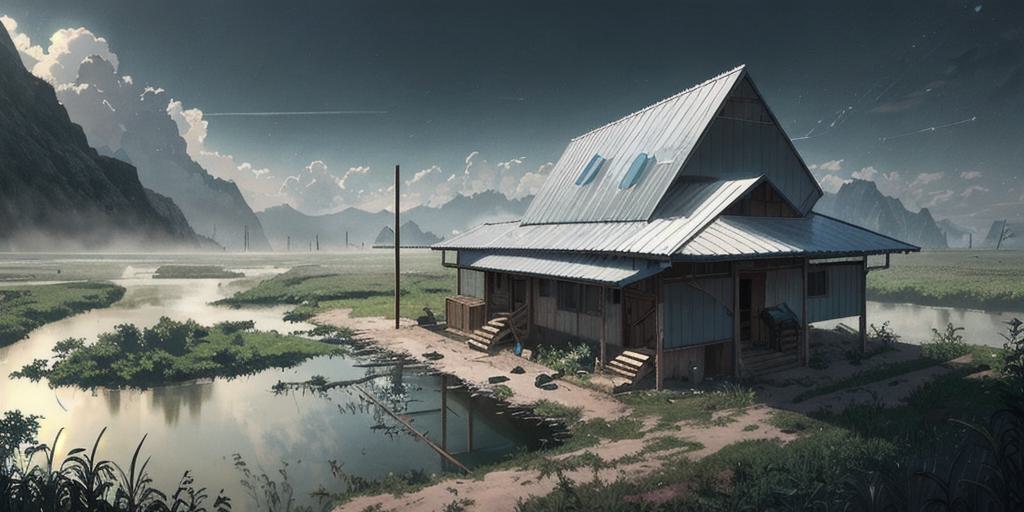
Disaster Relief: A New Paradigm
When disaster strikes, the immediate need for shelter, power, and water becomes painfully apparent. In these situations, off-grid water systems, combined with solar power, are making a profound difference. Nonprofit organizations like Nonprofit For Good are taking the lead, deploying solar water systems in disaster-stricken areas, such as the Philippines, Haiti, and Africa. These systems offer more than just immediate relief; they provide a model for sustainable, self-sufficient living, even under the most adverse conditions.
Implementing Off-Grid Water Systems: The Practicalities
Implementing off-grid water systems for disaster relief involves a shift in thinking. Instead of relying on traditional, centralized sources of water and power, these systems encourage decentralization, independence, and resilience. For example, Nonprofit For Good designs custom off-grid systems for small to medium homes, entirely disconnected from the utility grid or local water supply. These systems harness solar energy and deep well water technology, providing a reliable source of power and water. These initiatives illustrate the practicality and potential of off-grid systems, even in disaster scenarios.
Building Sustainable Communities: The Bigger Picture
Yet, the implementation of off-grid water systems in disaster relief is about more than just meeting immediate needs. It’s about building sustainable, resilient communities. Companies like Envision Solar are creating modular building systems like LifePort and LifeVillage, which integrate scalable photovoltaic panels to provide power. These ‘villages’ can be deployed to build entire self-sufficient communities, playing a significant role in eliminating energy poverty worldwide.
This bigger picture of building sustainable communities is where off-grid water systems truly shine. They are not just stopgap solutions for disaster relief but potential building blocks for a more sustainable, resilient future. By embracing these systems, we are not just reacting to disasters – we are proactively building a more sustainable world, one where every individual has access to clean, safe water, and the power to sustain it.
Quenching the Thirst of Off-Grid Living
Our exploration of off-grid water systems has taken us on a journey that meanders through the realms of innovation, self-sufficiency, and ecological harmony. We’ve traced the contours of rainwater harvesting, plumbed the depths of well-digging, and surfed the crest of solar power revolution. We’ve delved into the nitty-gritty of water filtration, storage solutions, and conservation. We’ve even peered into the future, glimpsing the potential of emerging technologies and their role in disaster relief.
At every turn, the importance of off-grid water systems in fostering self-sufficiency and sustainability becomes clear. Rainwater, a gift from the sky, can be collected, filtered, and used to meet myriad household needs. Solar power, the bounty of our nearest star, can be harnessed to pump and heat water, all the while reducing our carbon footprint. Even the seemingly humble act of digging a well is a testament to human ingenuity and our enduring spirit of self-reliance.
Off-grid water systems are far from a one-size-fits-all solution. They require thoughtful planning, careful implementation, and ongoing management. The journey towards self-sufficiency is a gradual one, but every step taken is a step closer to living in harmony with nature. Whether it’s constructing a rainwater collection system, installing solar-powered water pumps, or simply using water more consciously, each initiative is a stepping stone on the path to a more sustainable lifestyle.
Perhaps the most resounding message, however, is the transformative power of off-grid living. It’s not just about disconnecting from public utilities; it’s about forging a deeper connection with the natural world and our place within it. It’s about reimagining modern conveniences in a way that respects nature’s balance. It’s about living a life that’s not just about surviving, but thriving.
So, as we quench the thirst of off-grid living, let’s raise a glass to the future. A future where every drop of rain is valued, every gust of wind harnessed, and every ray of sunlight captured. A future where we don’t just survive off-grid, but thrive. After all, isn’t that what living off the grid is all about?